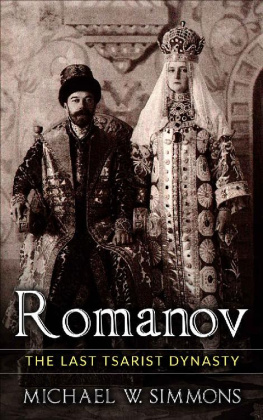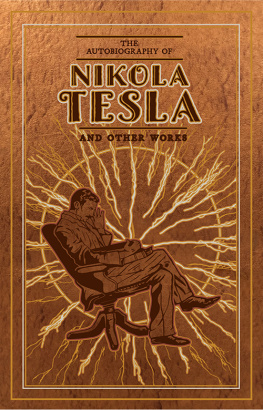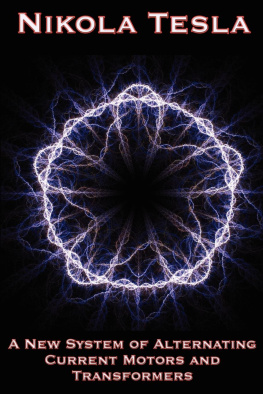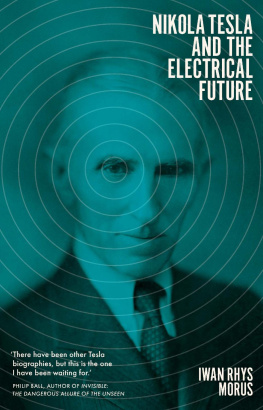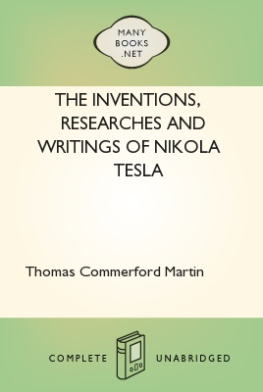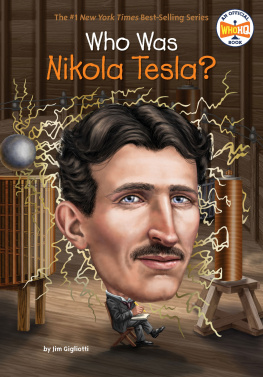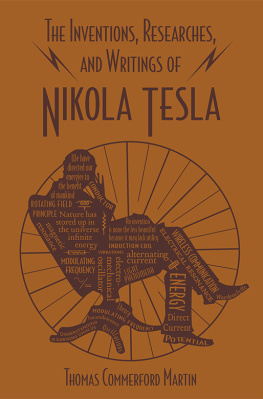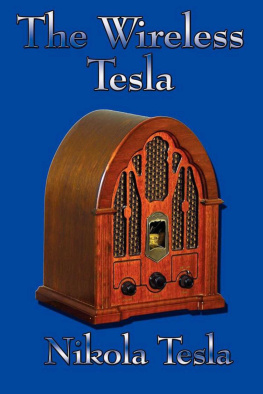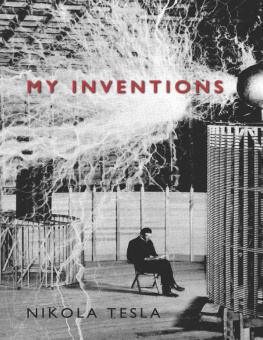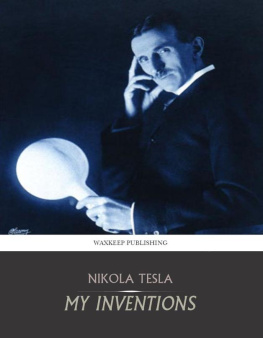Nikola Tesla
Prophet of the Modern Technological Age
By Michael W. Simmons
Copyright 2016 by Make Profits Easy LLC
profitsdaily123@aol.com
Table of Contents
Introduction
My belief is firm in a law of compensation. The true rewards are ever in proportion to the labor and sacrifices made. This is one of the reasons why I feel certain that of all my inventions, the Magnifying Transmitter will prove most important and valuable to future generations. I am prompted to this prediction not so much by thoughts of the commercial and industrial revolution which it will surely bring about, but of the humanitarian consequences of the many achievements it makes possible. Considerations of mere utility weigh little in the balance against the higher benefits of civilization. We are confronted with portentous problems which can not be solved just by providing for our material existence, however abundantly. On the contrary, progress in this direction is fraught with hazards and perils not less menacing than those born from want and suffering. If we were to release the energy of atoms or discover some other way of developing cheap and unlimited power at any point of the globe this accomplishment, instead of being a blessing, might bring disaster to mankind in giving rise to dissension and anarchy which would ultimately result in the enthronement of the hated regime of force. The greatest goodwill comes from technical improvements tending to unification and harmony, and my wireless transmitter is preeminently such. By its means the human voice and likeness will be reproduced everywhere and factories driven thousands of miles from waterfalls furnishing the power; aerial machines will be propelled around the earth without a stop and the sun's energy controlled to create lakes and rivers for motive purposes and transformation of arid deserts into fertile land. Its introduction for telegraphic, telephonic and similar uses will automatically cut out the statics and all other interferences which at present impose narrow limits to the application of the wireless.
Nikola Tesla, My Inventions
The really extraordinary thing about Nikola Tesla is that his experiments in electricity hold the power to fascinate even those of us who have little background in science and no real understanding of the principles of electrical engineering. Reading descriptions of Teslas electrical demonstrations and looking at photographs of his generated lightning can help the modern reader, who grew up in a world where electricity is so ordinary as to be unremarkable and invisible, to begin to appreciate what it was like when humans had only just begun learning how to harness electricitys power.
In the early 1890s, when Tesla stunned the world with a series of lectures and demonstrations showcasing his electrical experiments, electricity was a phenomenon that was little understood even by the first minds in the scientific field. Electricity still played only a negligible role in the life of the average person. If you lived in New York, Chicago, London, Paris, or another large city in America or western Europe, it is possible that you would have encountered electric lighting in the streets, or electrically powered trolley carsbut only the very wealthy had electric lights in their own homes.
For the common person, there was an aura of mystery and fascination around electricity that was only heightened by the rumors about how dangerous it was. Early direct current electrical power could be quite dangerousrudimentary wiring systems were prone to short circuits, explosions, and fires. Sometimes horses would bolt in the streets, because they received electrical shocks through their metal shoes when walking down a section of pavement close to a transformer. But the aura of danger was also a result of false propaganda: Thomas Edison, Americas most famous electrical engineer, was the bitter enemy of Teslas alternating current system (and, over time, of Tesla himself). Despite the fact Tesla had engineered his electrical induction motor specifically to provide a safer alternative to direct current electrical power, Edison was committed to convincing the American public that alternating current electricity was deadly. During the so called War of the Currents, a war waged almost single-handedly by Edison, he and his assistants held public demonstrations in which they attempted to prove the deadliness of alternating current electricity by electrocuting animals in publicsometimes livestock, other time cats and dogs that had been stolen from peoples yards by schoolboys Edison hired. All of this, just to hammer home his point that electricity could killunless it was his kind of electricity. Edison went so far in this campaign that it was as a direct result of his lobbying when the first death row inmate in an American prison to be executed by electrocution was killed by an alternating current.
Edisons propaganda had two purposes: to insure the superiority of his own direct current system, and to crush the competition posed by Teslas alternating current system. And he succeeded beautifully for a few years; belief in the dangerousness of electricity did not stop the White House from installing electric lighting, but it did mean that the President was not personally allowed to turn the light switches, in case of a short circuit. But alternating current was the superior system, and in time, even Edison was forced to acknowledge it, though not until long after it had begun to dominate the market. He never acknowledged how he had falsified reports of fatal accidents from alternating current electricity, however, or any of the rest of his false propaganda.
The chief difference between Edison and Tesla was that Edison was not just an electrical engineer. He was an American entrepreneur in the Industrial Age, an era in which millionaire robber barons were creating vast monopolies by buying up and consolidating coal, oil, steel, any commodity that stood a chance of making them a lot of money over a period of many years. Ethical considerations held no special sway over industrialists like Vanderbilt, Astor, Carnegie, Morgan, Van Allenthey made liberal use of threats, intimidation, bribes, and even violence to weed out competitors and consolidate their power over the markets. Edison was trying to advance in the same marketplace. A self-made man with no formal education, Edison was a practical inventor with no use for theory. He saw his electrical inventions as a route to fame, fortune, and legacy, and it didnt especially matter to him whether his system or Nikola Teslas system was betterhe just wanted his system to win. In both the best and worst of ways, Edison represented the nineteenth century ideal of the self-made man who had pulled himself up by his boot straps to achieve the American dream.
Nikola Tesla represented something quite different. Born in Croatia, educated in German language schools and Austrian polytechnic academies, Tesla was nonetheless largely self-taught when it came to his lifes work of electrical engineering. But he was steeped in a culture that was far removed from the American race to improve ones fortunes and elevate ones station in life at any cost. Tesla was a highly cultured person. From his parents, he learned to recite lengthy epic poems from memory. He appreciated music, literature, fashion, and fine dining, not merely as the trappings of financial success and social status, but in themselves. He contributed more to the field of electrical engineering than any single individual before or after him, but he was much more than just an electrical engineer. Perhaps because of his deep connection to the arts and humanities, or because of his essentially poetic temperament, Tesla never saw his scientific discoveries as merely marketable products that he could sell to industrialists for large sums of money and profitable patent royalties. Teslas relationship with electricity was partly that of an artist to his medium, partly that of priest to the eternal spiritual truths he wished to impart to his flock. He saw in his experiments, his machines, and his devices a means to make the world better, to end the problems and sufferings of humanity. And on an even more basic level, Tesla delighted in using electricity to awe and delight all who witnessed his demonstrations.
Next page

